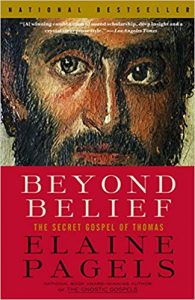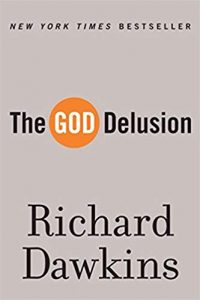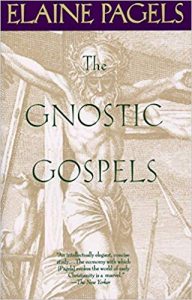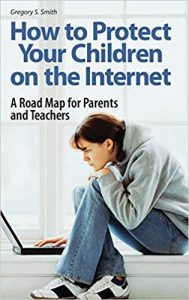Beyond Belief: The Secret Gospel of Thomas
Beyond Belief: The Secret Gospel of Thomas, by Elaine Pagels; published 2003 by Random House, New York; reviewed by Frank Thomas Smith.
Elaine Pagels, professor of religion at Princeton University, became famous – well, at least well known – with the publication of her book, The Gnostic Gospels, in 1979. She has written several other books as well on the history of Christianity, establishing her as the foremost popular scholar in the field.
Beyond Belief, published in 2003 by Random House, is a sort of sequel to The Secret Gospels, in that it incorporates the new scholarship that has come to light since that book was published. Since Ms. Pagels’ infant son was diagnosed with fatal pulmonary hypertension, her pursuit of knowledge about who Jesus really was has become a question of personal urgency for her. This need is reflected in the text and transforms the book into much more than a scholarly treatise for the curious. She wants to know what Christ meant to his followers before doctrine and dogmas, in other words, before Christianity was invented by the Church.
The discovery of the Gospel of Thomas, along with other early Christian texts, offers revealing clues. Pagels compares Thomas’s gospel (which claims to give Jesus’ secret teaching and indicates an affinity with the Kabbalah) with the canonic texts to show how the early Church chose to include some gospels and exclude others from the collection we know as the New Testament – and why. During the time of persecution of Christians, the church fathers constructed the canon, creed and hierarchy, suppressing many of its spiritual resources in the process, in order to avoid conflict with Roman law and religion.
A prime example is the label of heresy attached to the Gospel of Thomas, and its subsequent suppression. If a copy hadn’t been found by accident (or destiny?) in the caves of Nag Hammadi, along with many other documents during the middle of the twentieth century, we’d have never even known of its existence. Such secret writings had been denounced by Irenaeus, bishop of Lyon (c.180) as “an abyss of madness, and blasphemy against Christ.” Pagels had therefore expected to find madness and blasphemy in these texts, but when she first studied them in Harvard graduate school, she found the contrary in sayings such as this from Thomas. “Jesus said: If you bring forth what is within you, what you will bring forth will save you. If you do not bring forth what is within you, what you do not bring forth will destroy you. Pagels found that “… the strength of this saying is that it does not tell us what to believe but challenges us to discover what lies hidden within ourselves; and, with a shock of recognition, I realized that this perspective seemed to me to be self-evidently true.”
However, certain church leaders from the second through the fourth centuries rejected many of these sources of revelation and constructed instead the New Testament gospel canon of Matthew, Mark, Luke and John, which has defined Christianity to this day. The Gospel of John is of special importance in church dogma, and its basic tenets seem to be in direct opposition to Thomas. John says that he writes “so that you may believe and believing may have life in [Jesus’] name.” Thomas’s gospel, however, encourages us not so much to believe in Jesus, as John demands, as to seek to know God through one’s own, divinely given capacity, since all are created in the image of God. “For Christians of later generations, the Gospel of John helped provide a foundation for a unified church, which Thomas, with its emphasis on each person’s search for God, did not.”
According to Pagels, John is the only evangelist who actually states that Jesus is God incarnated. But not only Pagels says so. In one of his commentaries on John, Origen – a church father, (c.240) – writes that while the other gospels describe Jesus as human, “none of them clearly spoke of his divinity, as John does.” One may object that the other three, synoptic (“seeing together”) gospels call Jesus “son of God”, and this is virtually the same thing. But such titles (son of God, messiah) in Jesus’ time designated human, not divine roles. When translated into English fifteen centuries later, these were capitalized – a linguistic convention that does not occur in the original Greek. When all four gospels, together with Paul’s letters, were united in the New Testament (c. 160 to 360) most Christians had come to read all four through John’s lens, that Jesus is “Lord and God”. More »




